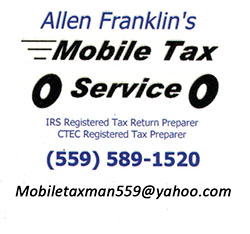Lemoore City Council sends fireworks ordinance back to the drawing board
The Lemoore City Council, at its July 5 Tuesday meeting, got an earful as it planned to take on the second reading of ordinance that would have levied fines for people who use illegal fireworks. The problem, from several who attended the meeting, was not the $1,000 prospective fines, but who was getting fined.
Several speakers were upset that landlords, who may have been oblivious to what their tenants are doing with fireworks, would be held responsible for what their tenants do, should the existing ordinance be approved.
California State law allows for local code enforcement, including the assessment of $1,000 fines. As written, the proposed ordinance would allow local law enforcement officers to issue citations.
Several people spoke out in favor of the ordinance, but wanted the landlord taken out of the picture – that is if he is unaware of any illegalities occurring on his or her property.
“Are the owners going to be held responsible?” asked Lemoore Councilmember Eddie Neal. “I don’t think the owners should be held responsible.”
Councilmember Jeff Chedester agreed: “I would like to see the ordinance re-worded to take the landlord out of the equation if he or she doesn’t know about it.”
One local landlord agreed. Former Lemoore City Councilmember Ron Allvin, who owns rental property in Lemoore objected to the landlord being held responsible for his tenants. “I have good renters and I know they wouldn’t do that.” But he didn’t want to be assessed if they did use illegal fireworks.
One speaker, a former City of Lemoore employee, Joe Simonson, even went so far as to blame a police officer, a neighbor who lives adjacent to him, as one of the abusers of illegal fireworks.
Councilmembers agreed to table the ordinance, which effectively stops it dead in its tracks. City officials will bring a new proposal to the council, which would eliminate the landlord or owner provision – should the landlord be unaware of illegal activity.
According to a city staff report, it has been difficult in recent years identifying local residents who use dangerous fireworks because local law enforcement or other code enforcement officers “must catch someone in the act, unless a witness is willing to make a citizens’ arrest,” which usually won’t happen as “neighbors don’t want to get involved to such a degree.”
The new ordinance requires only that officers be able to identify what property the fireworks were launched from, meaning those living at the property, or the owner of the property if it’s a rental, would be held financially responsible for what could be up to a $1,000 fine.
According to the original ordinance’s language: “If the homeowner is allowing someone to use their property to launch illegal fireworks they are definitely culpable, even if they did not buy them or light them.”
Other changes included revising Lemoore’s rules to better adhere to the state’s guidelines and rules regarding dangerous fireworks. Currently state law mandates that residents may not use or purchase fireworks classified by the State as dangerous.
In spite of California and local laws, from June 17 to July 17 every year, an average of 200 people a day show up in emergency rooms with fireworks-related injuries, according to the U.S. Consumer Product Safety Commission. Most of those injured are children. Injuries to eyes and fingers are most common and more than half of the injuries involve burns.
Even the lowly sparkler, bane of every young child’s Fourth of July experience, burns at 2,000 degrees Fahrenheit. That temperature will melt metal, so it will certainly severely burn and scar skin, causing tremendous pain and trauma to the burn victim. In fact, sparklers are the number one cause of reported injuries due to fireworks.
California’s State Fireworks Law, passed in 1973, classifies the items that qualify as "fireworks," specifies who may possess or sell them, and dictates when and where they may be set off.
Counties within the state may enact their own ordinances, and most have. These local laws can mirror state law, but cannot add to the rules in the State Fireworks Law. That's because the Legislature intended the state scheme to totally occupy the field of fireworks legislation.
Private citizens who are not licensed by the state to discharge explosives are strictly prohibited from possessing and/or discharging (and retailers are prohibited from selling) certain fireworks that state law lists as “dangerous.” These fireworks include:
- any that contain arsenic sulfide, arsenates, or arsenites, boron, chlorates, gallates or gallic acid, magnesium, mercury salts, phosphorous, picrates or picric acid, thiocyanates, titanium, or zirconium
- firecrackers
- skyrockets and rockets (anything that shoots up and explodes)
- roman candles and anything that discharges a ball of fire into the air
- chasers (anything that darts or travels along ground during discharge)
- sparklers more than 10 inches in length or one-fourth of one inch in diameter
- fireworks designed and intended by the manufacturer to create the element of surprise upon the user (the exploding cigar is a classic example)
- torpedoes of all kinds that explode on impact
- fireworks kits
More Features
- Laton Lions Club shows off at popular annual rodeo and parade held April 1-3
- City officials say developer says he will not pursue a controversial 12,600-cow feedlot outside city's boundaries
- City of Lemoore officials cite serious concerns about proposed cattle feedlot
- Lemoore Council likely to respond to proposed feedlot near Lemoore and college
- Photo Gallery: NAS Lemoore aviators conduct change of command while in the air
- Naval Air Station Lemoore to get new Carrier Air Wing commander in December
_0.jpg)

.jpg)



